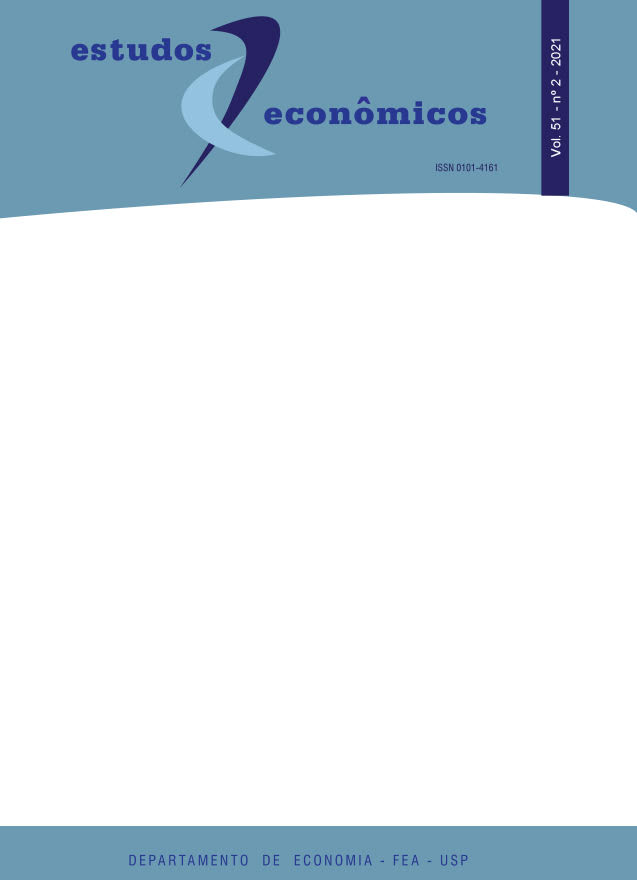Restricting the timing of Elective CS: evidence from Brazil
DOI:
https://doi.org/10.1590/0101-41615122lbmKeywords:
Scheduled Cesarean Section, Dif-in-Dif, PolicyAbstract
Brazil has one of the highest Cesarean Section (CS) rates in the world. It is a share of 58.3% reported by the Living Births Information System (SINASC) 2015-2017. It is well above the maximum rate of 15% recommended by the World Health Organization (WHO). In this paper, we estimate impacts and unintended consequences of the Resolution 2,144 from the Federal council of Medicine (CFM) on outcomes of Low Risk First Born births (LRFB). The Resolution introduces a minimum of 39th weeks of gestation for Elective CS. Elective CS before the 39th
week rate dropped 2.78 percentage points, which is statistically significant and equivalent to a 24% decrease in this outcome’s mean. We also find increases in birth’s time length: the percentage of births happening before the 39th week decreased 2.34 percentage points, which is a decrease of 6% in its average. Our results suggest that Elective CS’s were postponed from the 37-38th week to after the begin of the 39th week. We show that the policy had an unintended consequence once it seems to have changed the way potential spontaneous Natural Deliveries are anticipated from weekends to weekdays through Scheduled CS.
Downloads
References
Angrist, J. D., & Pischke, J. S. 2008. “Mostly harmless econometrics: An empiricist’s companion”. Princeton university press.
Brazil. 1998. “Define máximos de cesarianas em relação ao total de partos por hospital”. Ministério da saúde, Diário Oficial da União. Portaria n o 2816, de 29 de maio de 1998. Disponível em: http://bvsms.saude.gov.br/ bvs/saudelegis/gm/1998/prt2816_29_05_1998.html. Acessado em 02/02/2021.
Card, D., Fenizia, A., and Silver, D. 2019. “The Health Impacts of Hospital Delivery Practices” (No. w25986). National Bureau of Economic Research.
Costa-Ramón, A., Kortelainen, M., Rodŕıguez-González, A., & Sääksvuori, L. 2020. “The Long-Run Effects of Cesarean Sections”. Journal of Human Resources, 0719-10334R1.
Gans, J. S. and Leigh, A. 2008. “What Explains the Fall in Weekend Births?”. mimeo.
Glavind, J., Kindberg, S. F., Uldbjerg, N., Khalil, M., Møller, A. M., Mortensen, B. B., and Henriksen, T. B. 2013. “Elective caesarean section at 38 weeks versus 39 weeks: neonatal and maternal outcomes in a randomised controlled trial”. BJOG: An International Journal of Obstetrics & Gynaecology, 120(9), 1123-1132.
Gurol-Urganci, Ipek, et al. 2011. “The timing of elective caesarean delivery between 2000 and 2009 in England.” BMC pregnancy and childbirth 11.1:1-7.
Kahn, A., and Lang, K. 2020. “The promise and pitfalls of differences-in-differences: Reflections on 16 and pregnant and other applications”. Journal of Business & Economic Statistics, 38(3), 613-620.
Nobrega, Juliana K. 2015. “What is Pushing Brazil Not to Push?”. Diss. University of Illinois at Chicago.
Spinola, Paula de Sousa Leão. 2016. “Convenience Effect on Birth Timing Manipulation: Evidence from Brazil.” Programa de Pós-Graduação em Economia, PPGE/IE-UFRJ.
SP. 1989. “Resolução 143. Define percentuais máximos de cesarianas em relação ao total de partos por hospital”. Secretaria de Estado da Saúde: No 143. Diário Oficial do Estado de São Paulo.
Oshiro, Bryan T., et al. 2009.”Decreasing elective deliveries before 39 weeks of gestation in an integrated health care system.” Obstetrics & Gynecology 113.4: 804-811.
Downloads
Published
Issue
Section
License
Copyright (c) 2021 Lucas Braga de Melo

This work is licensed under a Creative Commons Attribution-NonCommercial 4.0 International License.
By submitting an article, the author authorizes its publication and attests that it has not been submitted to any other journal. The original article is considered final. Articles selected for publication are proofread for grammatical and orthographic errors. The journal does not pay rights for published articles. The Institute of Economic Research from the School of Economics, Business and Accounting of the University of São Paulo (Instituto de Pesquisas Econômicas da Faculdade de Economia, Administração e Contabilidade da Universidade de São Paulo) owns the journal's copyright.
Funding data
-
Coordenação de Aperfeiçoamento de Pessoal de Nível Superior
Grant numbers 001





 Atualizado em 14/08/2025
Atualizado em 14/08/2025